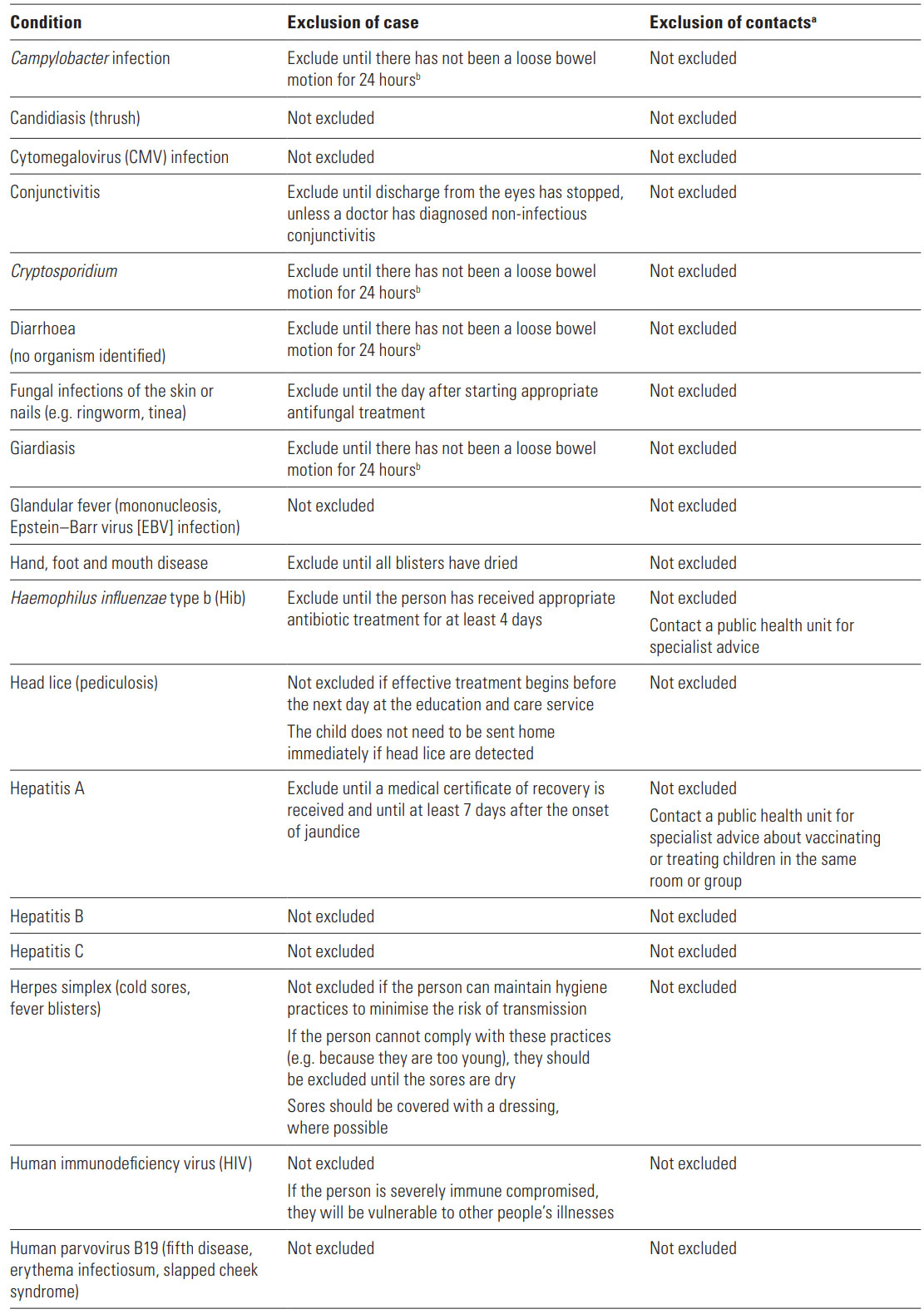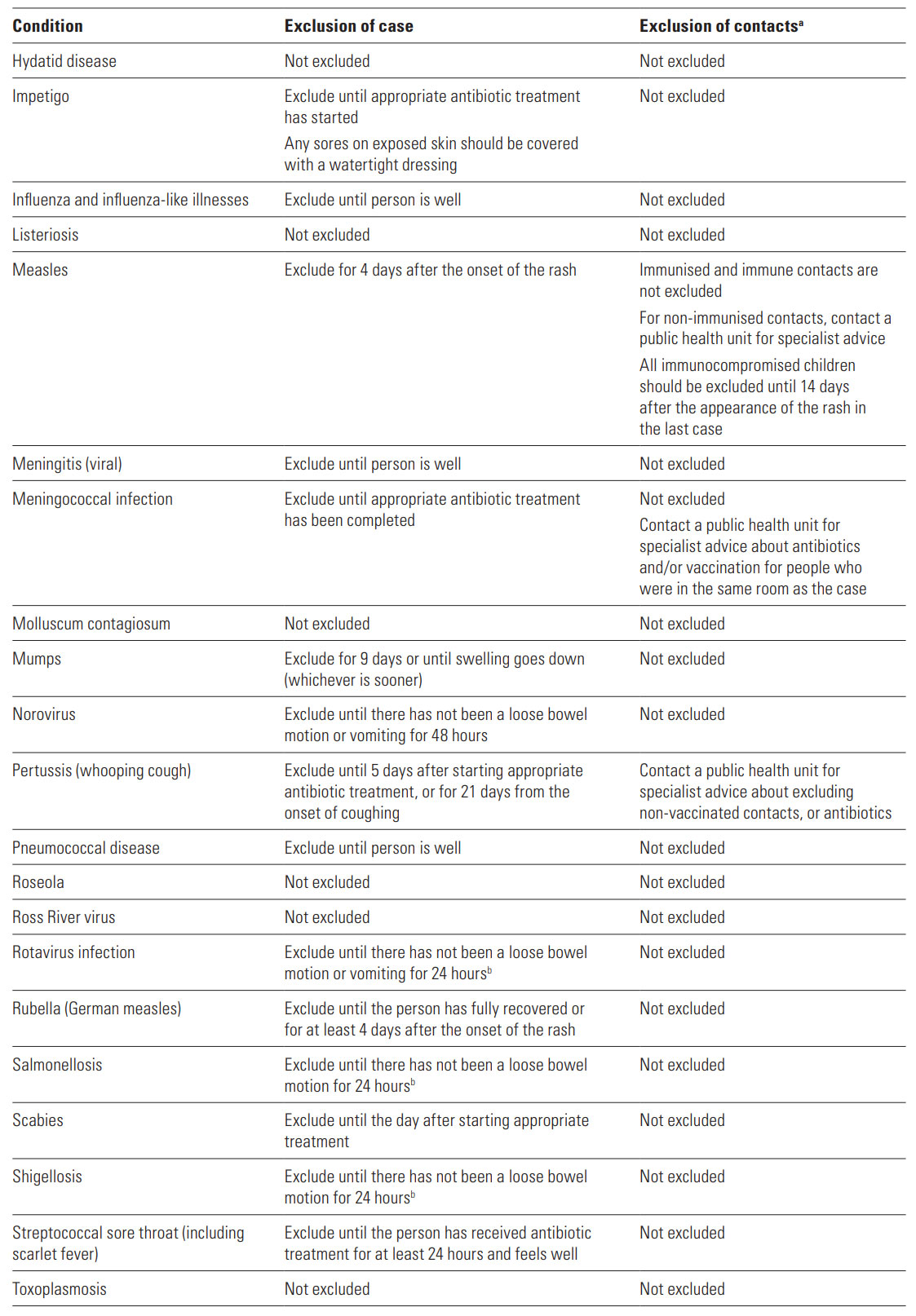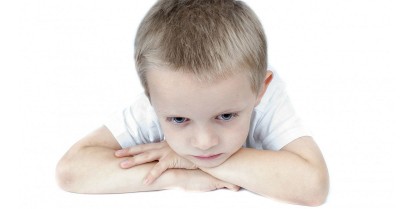The spread of certain infectious diseases can be reduced by excluding the child or Educator, known to be infectious, from contact with others who are at risk of catching the infection. The following information details the recommended exclusion periods for infectious diseases. These are based on how long a child/educator with a specific disease is likely to be infectious and to be excluded from the service until they have passed the exclusion period and well enough to return.
Exclusion Periods
Child care regulations in each State and Territory require exclusion of children and employees from the centre whilst infectious with a significant, acute illness.
The need for exclusion depends on:
- the ease with which the infection can be spread
- the ability of the infected person to follow hygiene precautions
- whether or not the person has some immunity to the infection (either from vaccination or past infection)
- to a lesser extent, the severity of the disease
Excluding An Unwell child – What To Do
All early childhood services, such as childcare centres and kindergartens, etc. have a responsibility under the Public Health and Wellbeing Regulations 2009 (Victoria) to manage the following infectious diseases:
- whooping cough (pertussis)
- polio
- measles
- mumps
- rubella (German measles)
- meningococcal disease
If your service has a sick child, you must:
- ensure that unwell children do not attend your service, as per national guidelines (Staying healthy: preventing infectious diseases in early childhood education and care services, 5th edition)
- isolate children who became unwell during the day from other children and send the unwell child home as soon as possible
- exclude the unwell child
- notify the department immediately if a child is suspected of having one of the six infectious diseases listed above; please call the department even if you believe a doctor has already done so
- defer any action, such as alerting parents, excluding unwell children or displaying signage, until directed to do so by the department.
Exclusion policies are time-honoured but have a number of drawbacks. Parents may have difficulty in finding alternative care for mildly unwell children. As a result, they may be tempted to place the children in other centres, thereby increasing the chance of the spread of infection into the wider community.
Recommended Exclusion Periods
The following table represents the recommended exclusion periods. These are based on how long a child/educator with a specific disease is likely to be infectious. These are the minimum exclusion periods - child/educator may need to stay home for longer until they are well enough to return to the service. The recommendation ‘Not excluded’ means that there is not a significant risk of spreading the infection to others, and exclusion is not necessary:



Definitions:
- Exclusion periods are based on the time that a person with a specific disease or condition might be infectious to others.
- Non-exclusion means there is not a significant risk of transmitting an infection to others. A person who is not excluded may still need to remain at home because he or she does not feel well.
- A contact is any person who has been close enough to an infected person to be at risk of having acquired the infection from that person.
Please note - Sometimes people who have been in contact with an infected person may need to be excluded too.This depends on the disease; a public health unit will usually be involved to make sure exclusion is appropriate.
Different exclusion periods will apply to people whose work involves food handling. If people whose work involves food handling have vomiting or diarrhoea, they should not return to work until they have been symptom-free for 48 hours.
For some conditions that cause diarrhoea (such as Campylobacter, Salmonella and Giardia), children may be able to return 24 hours after the diarrhoea has stopped, even though the germ may still be in the faeces. This is because the number of germs present will be at a low level and, once the diarrhoea has stopped, it will be easier to maintain good hygiene.
Most parents will appreciate your attempts to prevent illness in their children. It is especially important that parents support the education and care service’s policies on hygiene and infection control. Ask parents to encourage their children to perform effective hand hygiene when they arrive at the education and care service, and when they leave.
Education and care services should not be influenced by letters from doctors stating that the child can return to care unless the child’s condition fulfils the criteria for returning to care. Sometimes doctors can make different diagnoses for children in the same education and care service with illnesses that appear similar. It is the doctor’s role to make the diagnosis, but education and care services can use the information in Staying healthy to decide on their response to an illness (e.g. the required exclusion time). Your local public health unit can help you with these situations, or if you are in doubt about exclusion.
References:
SA Health, Government Of South Australia
Infection Control In childcare Settings, Australian Governments Departement Of Health
Staying healthy: preventing infectious diseases in early childhood education and care services, 5th edition, National Health and Medical Research Council Australian Government
